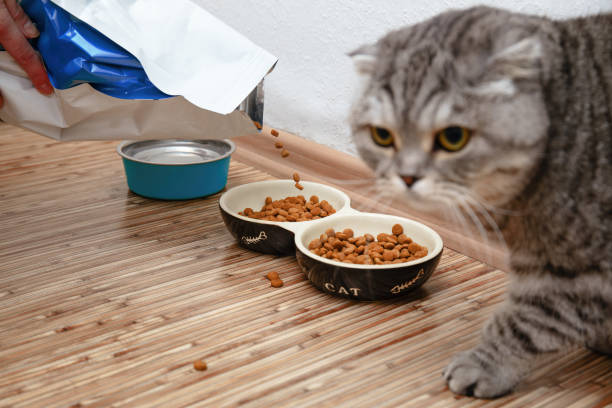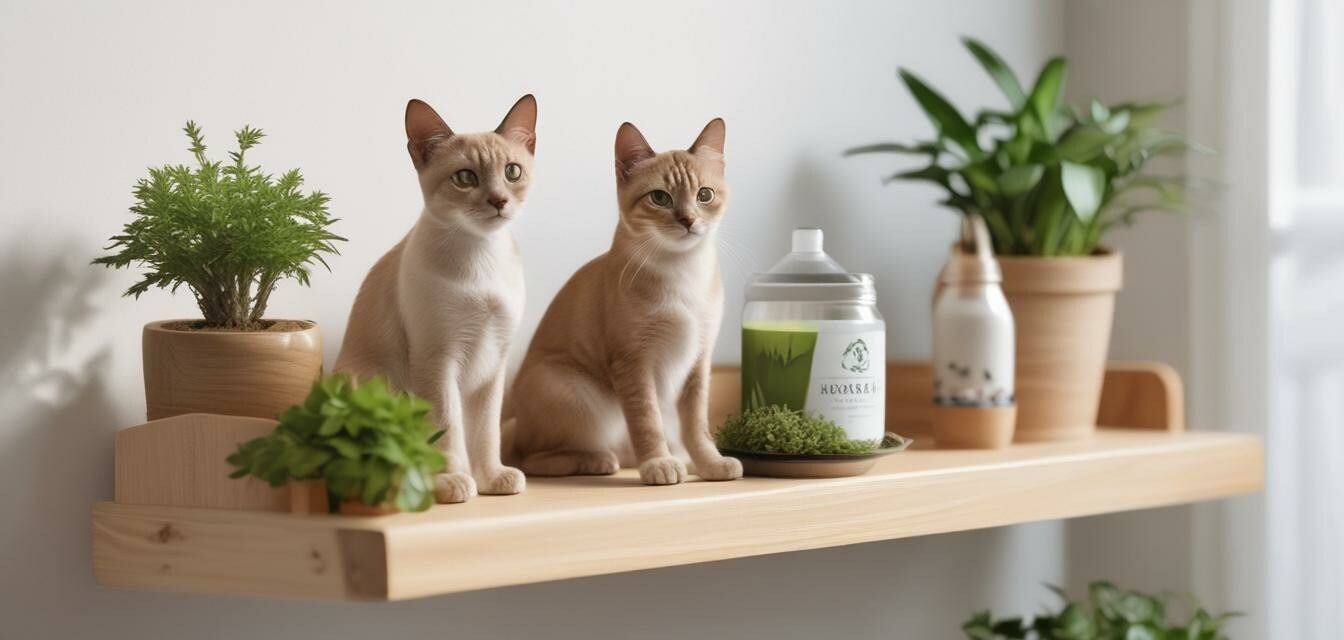
Are Expensive Pet Foods Really Better? A Deep Dive Into Ingredients
As the pet food industry grows, so do the price tags on premium brands. But is higher cost always synonymous with better nutrition for your furry friend? Let’s explore the truth behind pet food labels.
🐶 Pet Star
21 min read · 1, Feb 2025

Introduction: The Rising Cost of Pet Food
If you’re a pet owner, you’ve probably come across a myriad of pet food options, each promising to provide the best nutrition for your furry companion. The price range for pet food is wide—ranging from inexpensive, mass-market brands to premium, boutique options that cost significantly more. With such a broad range, one key question looms: Are expensive pet foods really better for your pet?
As pet owners become more conscientious about their pets’ health, the demand for premium foods has risen. After all, it’s only natural to assume that more expensive products are higher in quality, right? But when it comes to pet food, is that assumption true? Or are we simply paying more for fancy packaging, trendy ingredients, and clever marketing?
In this article, we’ll take a deep dive into the ingredients found in pet food, analyzing whether premium prices truly correlate with higher quality or if we’re being swayed by shiny labels and a growing trend toward “gourmet” pet diets.
The Price-Quality Myth: What’s Really Inside?
1. Ingredient Transparency
One of the first things that stands out when comparing expensive pet foods to their more affordable counterparts is the ingredient list. Premium brands often boast high-quality meats, vegetables, and grains as their main ingredients. But here’s the catch—many of the lower-priced options also use these same ingredients, sometimes sourced from reputable suppliers. So what’s the difference?
The key lies in the quality and sourcing of those ingredients. Premium pet food brands often focus on high-quality, organic, or human-grade ingredients that are ethically sourced. For example, some of the pricier brands use free-range chicken or grass-fed beef as opposed to standard, factory-farmed meat. But in terms of nutritional content, there might not always be a significant difference. In fact, some mass-market foods use high-quality ingredients that are just as nutritious but come at a lower cost due to their sourcing methods and production scale.
2. Fillers and Additives: Are They Really Harmful?
One of the primary reasons some pet owners shy away from lower-cost foods is the presence of “fillers” like corn, soy, or wheat. These are used in some pet foods to bulk up the product and make it more affordable. But are they bad for pets?
The truth is, not all fillers are inherently harmful. Corn, for example, is a good source of energy and fiber and can be digestible for many pets. However, pets with food sensitivities may have issues with some of these ingredients. While expensive pet foods often avoid these fillers, the overall impact of these ingredients on your pet’s health depends on the individual animal and their specific dietary needs.
The Science Behind Premium Pet Foods
1. Nutrient Density
Premium pet foods are often marketed as more nutrient-dense, meaning they provide more nutrition per serving compared to lower-cost brands. This could mean a higher concentration of vitamins, minerals, and antioxidants that promote your pet’s overall health and wellbeing. For instance, many higher-end brands emphasize the inclusion of fatty acids like omega-3s from fish oils or flaxseeds, which are beneficial for skin and coat health.
However, the presence of nutrient-dense ingredients doesn’t always guarantee that your pet will absorb them effectively. Some pets may have difficulty digesting certain ingredients, making the extra nutrients irrelevant. This is why it’s crucial to focus on your pet’s individual health and consult with a vet before choosing a food based purely on nutrient content.
2. Digestibility: Quality Over Quantity
Another key factor in premium pet foods is the digestibility of ingredients. Premium brands often invest more in creating easily digestible formulas that can benefit pets with sensitive stomachs or digestive issues. While some mass-market brands may use lower-quality proteins or fillers that are harder for pets to digest, top-tier brands typically prioritize high-quality proteins like chicken, lamb, and salmon, which are more easily absorbed by a pet’s digestive system.
However, just because a food is marketed as “easier to digest” doesn’t mean it’s the best choice for every pet. Again, each animal’s digestion is unique, and what works for one pet may not work for another. For some pets, a higher-cost food may be better absorbed, while for others, a less expensive food may suffice.
The Marketing Factor: How Much of the Price Is Hype?
1. Fancy Packaging and Branding
With the rise of the pet industry, marketing has played a huge role in shaping consumer perceptions about the quality of pet food. Premium brands often boast attractive packaging, natural claims, and promises of gourmet ingredients, which can create the illusion of superior quality. While these claims may be true in some cases, they can also serve as clever marketing strategies to justify higher prices.
For example, some premium brands emphasize their commitment to sustainability, ethical sourcing, or environmentally friendly packaging—while these are important aspects, they may not always translate to a substantial difference in the nutritional value of the food. In many cases, less expensive brands are also making strides in these areas but without the flashy labels and price tags.
2. Limited Ingredient Diets and Novel Proteins
Some of the most expensive pet foods offer limited-ingredient diets or foods with novel proteins like kangaroo, bison, or venison. These types of diets are often marketed as being “hypoallergenic” or great for pets with food sensitivities. While these can indeed be beneficial for some pets with specific dietary needs, they aren’t necessarily superior for the average pet. Plus, limited-ingredient diets tend to be pricier because they use fewer ingredients, often with more exotic sources of protein.
Conclusion: Is Expensive Pet Food Worth It?
So, are expensive pet foods really worth it? The answer is not as simple as yes or no. It’s important to recognize that some premium foods offer real nutritional benefits, particularly for pets with sensitive stomachs or special dietary needs. These foods may contain higher-quality ingredients, better digestibility, and more concentrated nutrients that could positively impact your pet’s health.
However, the high price doesn’t always guarantee better nutrition, and some affordable pet foods can provide similar benefits at a fraction of the cost. The most important thing is to focus on your pet’s specific needs, consult with your veterinarian, and choose a food that works best for your pet’s health and lifestyle. The key is to prioritize the right balance of nutrients over price alone.
Q&A: The Truth About Expensive Pet Foods
Q: Do expensive pet foods have more protein than cheaper options?
A: Not necessarily. Some expensive pet foods focus on the quality of protein rather than the quantity. Mass-market pet foods may contain just as much protein, but the source might be of lower quality or harder to digest.
Q: Why are some pet foods so much more expensive?
A: Expensive pet foods often use high-quality, human-grade ingredients, have more nutrient-dense formulas, and may be ethically sourced or eco-friendly. The cost also reflects the brand’s marketing, packaging, and production methods.
Q: Can I trust the claims on premium pet food packaging?
A: While many premium brands make valid claims about their ingredients, some are more focused on clever marketing than substance. Always read the ingredient list carefully and choose a food that fits your pet’s unique needs.
Q: Is it possible to find good quality pet food at a lower price?
A: Yes, many affordable brands offer good quality with well-balanced formulas. The key is to look at the ingredients and ensure the food provides essential nutrients, without excessive fillers or artificial additives.
Q: Should I always feed my pet the most expensive food I can find?
A: Not necessarily. Your pet’s diet should be tailored to their specific needs, not based on price. Consult your vet to determine which food is best for their health and lifestyle.
Similar Articles
Find more relatable content in similar Articles

How Climate Change Affects Wild and Domestic Animals...
Climate change is dramatically.. Read More

Composting Pet Waste: A Greener Way to Clean Up...
As pet ownership continues to .. Read More

Pets and Mental Health: The Science Behind Emotional H..
Discover the profound impact o.. Read More

Sustainable Pet Products: What to Look for in 2025...
As sustainability becomes a ce.. Read More
Explore Other Categories
© 2024 Copyrights by rPets. All Rights Reserved.